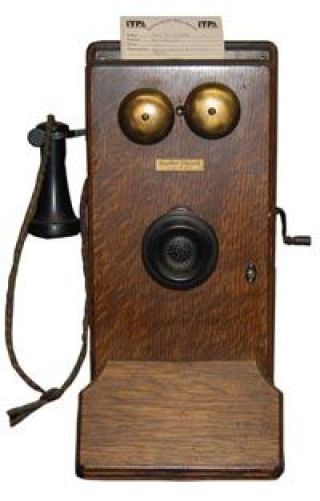MARYSVILLE Phone home.
Thats the mission for the Marysville Historical Society, which is banding together with a local telephone museum to preserve and display a centurys worth of historic communications gear.
The Norwesco Telecom Pioneer Club has stowed samples of old phones, switchboards and computer gear in a Verizon substation in town for decades. The club is composed of former phone company employees who have made displays showing how the antiquated systems of yesteryear worked. Some of this stuff is just this side of the two-cans-on-a-string model improved by Alexander Graham Bells first patent in 1876.
But the phone club will soon have to leave its digs on Grove Street near the Marysville Police Station and the Marysville Historical Society has pledged the basement of a planned new museum to the club. The society has a plot of land next to Jennings Memorial Park where a new $2 million building will be built; land was purchased cheap in 1986 and the society has a capital fund drive going to raise the money needed to build the 6,000-square-foot, two-level structure.
The phone club might get about half of the space, on the bottom floor, although details have yet to be worked out, according to Morrie Sachsenmaier, coordinator for the Norwesco Telephone Museum.
Weve been collecting this stuff for years, Sachsenmaier said. He was a GTE employee for 32 years, spending 15 of those as an engineering supervisor for the Verizon predecessor.
He currently gives tours to groups on an ad hoc basis, usually to only a handful of people at a time. The cramped quarters hold a treasure of electronic gear spanning more than 110 years, with crank phones from the late 1800s to elaborate switchboards from the 1970s. Space is tight and the corridors are narrow, but Sachsenmaier manages to bring to life the antiquated gear as he explains how it was used. Mannequins in period costume are propped at ancient switchboards where calls were manually switched by operators who could and did listen in.
That prompted a Kansas City undertaker to invent the first pushbutton phone, which is actually older than the dial phones of the last century. Alman Strowger tired of folks eavesdropping as he made funereal arrangements and in 1892 constructed what became the first automatic telephone exchange. Sachsenmaier has one on a shelf.
The museum also has two long-distance switchboards. As fascinating as they are to look at, how they were used is even more incredible. When a phone customer wanted to place a call an operator at the console would see their line light up, represented by a light. The operator would manually patch in a cable, and route the call, slipping a paper punch card into a time clock embedded into the console. The card would be stamped on one side with the time the call started; when the light went out the operator had to retrieve the card as soon as possible and stamp it on the other side to record the calls end. Those cards then were transferred to an army of bookkeepers who billed the customer accordingly. Operators handled many calls at one time, and it took hundreds of switchboards to handle the traffic. Each call went to every switchboard and supervisors stood behind the operators, all female, and ensured the girls kept up with the lights.
It took a very good operator to keep the cords up, Sachsenmaier said. Each electrical cord completed a circuit and made the physical connection allowing callers to stay connected. Now those functions are handled by computers, which track the call time and billing too.
The museum has lots of old glass insulators, those cobalt blue glass orbs that held the wires and kept the electricity from grounding on the wooden poles. There is a collecting and brokering market for these, and the museum has a copy of their bluebook.
Its a fascinating museum, said visitor Myrtle Lorenzo, who was touring the place with members of the Everett Antiques Club. Its amazing, its nicely done.
There are phone books dating back to 1915; one from 1962 shows the Space Needle built for the Century 21 Exposition and is barely a half-inch thick. There is also an interactive computer display; with the muted browns of sepia-toned photographs, the walk-through shows how the communications industry evolved. To follow the timeline the viewer simply tugs on a coiled phone cord; just like the handsets for land-lines used to have. About 5,000 videotapes are stored in the place; some were training material for GTE, others were quarterly reports.
Theres a lot of video thats just outstanding, Sachsenmaier said.
Some of the large electronic panels stored in the museum will probably have to be thrown out when the phones make the trek to the new facility. The back end of the current home contains relics from the switch to digital and electronic switching, modern stuff from the 1970s and 80s thats already dated. Sachsenmaier hopes to have room to bring other treasures out of mothballs.
Well be open when they are, Sachsenmaier said. Theyve expanded their museum to give us the whole lower level.
MV Phone Home – Historic phones to be housed in new museum
MARYSVILLE Phone home.



